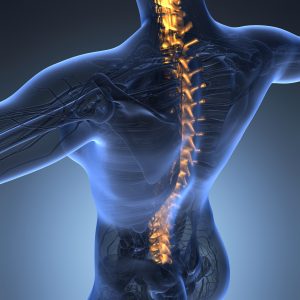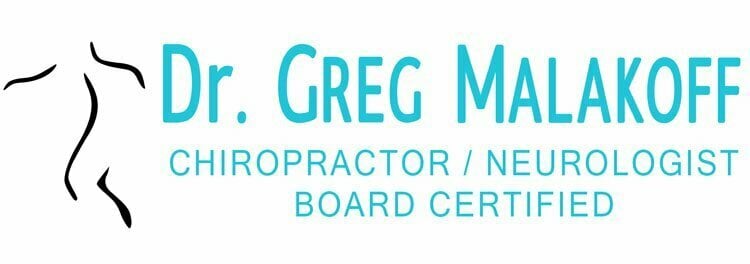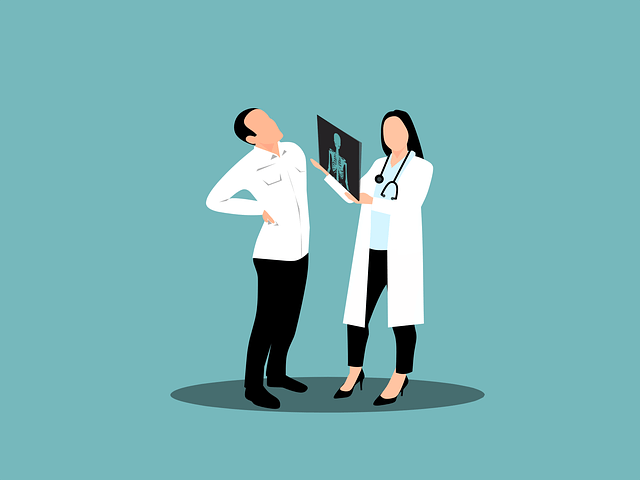There are three fundamental causes of golf injuries: poor posture, lack of flexibility and poor swing mechanics. If you’re like most of my patients you’re probably guilty of all three.
Because most golfers can’t swing a golf club from either side, the chances are good that at some point they’re going to experience some form of injury or pain: root cause of poor mechanics is often a result of a physical restriction or mechanical dysfunction, which can be alleviated. A prescribed stretching program, specifically designed around an individual’s restrictions, can address a lack of flexibility. Most of you probably think you can handle the poor posture problem yourselves. Sorry but you can’t. You say “you don’t even know me.” You still can’t. Here’s why.

You do not have any voluntary control of the intrinsic spinal muscles that hold you up in Earth’s gravitational field. Don’t believe me? Let’s do a test. Try moving a spinal bone in the middle of your back to the left while moving the one above it to the right. Can’t do it can you? Unlike the motor pathways that come from the front of your nargin that allow you to control voluntary muscles such as your arms, the nerves that go to the internal spinal muscles come from your subconscious, that part of the brain in the back of your head called the cerebellum.
(This is the part of the brain that allows us to stand up and act like humans or at least golfers. And you wouldn’t want it any other way.) Who would want to be consciously aware of the thousands of calculations occurring every second just to take a step forward? I know for some, it may be millions of calculations. And for others, it’s just hard being conscious. Hence the reason we see so many ads for Prozac, Paxil, and Zoloft and worse yet, so many people taking brain damaging drugs. If these people played sports they would have a better chance of not feeling like they need to alter their mood, unless of course they played golf as badly as I do. I’ll get back to the neurophysiology of why moving effects our brains in a good way, latter. But the point of this paragraph is that you have very little control over your posture. It is a problem that actually requires intervention.
Back to the golf course, where physical exertion is intermittent. A golfer will attempt approximately 50-70 violent swings every five minutes or so while playing 18 holes. The average amateur will swing his club at 80-100 miles per hour. On the driving range, the pounding is rapid and relentless. You flail away at golf balls 60-100 times in a half hour, and often continue the assault for hours on end.
Typical golfers achieve approximately 90 percent of their peak muscular activity when driving a golf ball. This is equivalent to picking up a weight that can only be lifted four times before total fatigue. This level of exertion and muscular activation equates golf with such sports as football, hockey and martial arts. Who knew you were so macho? The difference that saves the backs of other athletes outside of golf is that they include conditioning before attempting to play. At this point be honest with yourself when evaluating your preparation. No, yawning doesn’t count as stretching. Is it any wonder there are so many golf related injuries?
The golf swing requires the spine to rotate, bend laterally and extend. This requires flexibility that is golf-specific. Hence the need for a golf-specific examination procedure that can identify potential problem areas. Anyone can be a critic but now, once identified, you’ll hopefully want the appropriate correction sequences. What I’m about to get into is neuromuscular re-education, fitness and conditioning for golf, not a program of golf instruction. I do not intend to teach the golf swing. After all, I play golf worse than you. I hope to identify the biomechanical movement responsible for a repetitive strain injury. It will be up to you to then “re-route” your swing path to prevent further injury.
Lets see what can be done for the golfer who has pain stemming from postural dysfunction and poor flexibility.The ability to maintain posture during the golf swing is a measure of a golfer’s dynamic postural strength and fitness. The normal spinal curves that we should have developed when we were babies crawling on the floor, relate to our ability to rotate for a powerful golf swing. The position of any structure is going to determine its function. An example of this is our fingers. They have hinge joints that make them well suited for bending, but not too good for twisting. Good golf posture requires the curves in the neck and low back to resemble the letter C in reverse when looking at you from the side. These normal spinal curves known as lordosis, provide mechanical leverage for strength and facilitate your ability to rotate. Poor golf posture with a collapse of these curves (kyphosis) restricts spinal rotation. This will cause golfers to over-swing, leading to soft tissue injuries.
For those of you who don’t think this is an important point let me hammer you on it some more. Lets do this mathematically. If you ever noticed a bridge like the Golden Gate, you probably wondered why they always have a curve. The curves add strength to the structure. In engineering, there is a simple formula.
N squared + 1 will equal the maximum desired strength of the structure. N stands for the number of curves. For the human structure n=3. Human beings should have 3 curves in their spine. If you square 3 you get 9, add 1 and the total is 10. If you are missing a curve you have 2 remaining, 2 squared = 4 +1 totals 5. 5 over 10 = ½ or 50%. This means your muscles are working 50% harder, with just one curve missing. If these muscles are continually working 50% harder just to hold you up in Earth’s gravitational field, the probability is good that one day you will wake up and for no apparent reason you will suffer an agonizing sprain/strain. The probability is even better that you will hurt yourself on the golf course whether awake or not.
There is more to hitting the ball farther that just having proper low back and neck mechanics. I’d estimate that 80 percent of golfers lack the necessary flexibility in the shoulders and hips to swing the golf club on track through the necessary planes of motion. In less than 2 seconds, the golfer must generate enough kinetic energy to get the club head moving at around 100mph. From standing still over the ball, the golfer’s body weight is coiled mostly at the back of the foot. When you have reached the limits of the elastic barrier of your ligaments and tendons, the coil, will suddenly reverse itself. The downswing starts with the hips. First you slide, and then rotate toward the target to make room for the now-released kinetic energy stored in your upper torso, as the forward arm descends the vertical plane. The head of the club is delivered to the ball on an inside-out path. As you stand tall, facing the intended target, there is a complete transfer of the body weight to the front foot at the finish of the swing.
But where are points of reference for the guidance of all this motion? Once movement begins, how do we know if the body is moving in the proper sequence and direction? One thing we’re all certain of, if you wait for the feedback of the flight path of the ball, it is too late. In hitting the ball farther, flexibility of the shoulders and hips are important, but how can this be measured and improved? Adequate range of motion of your shoulders includes the range of motion of the thoracic spine (mid back).
However the primary complaint of patients who play golf is low back pain not mid back pain. In fact 50 percent of golfers will eventually become injured. Another important factor in our quest to hit the ball further is the pivot, which, happens to also be an important factor in why so many golfers are hurting in their backs and overall golf game.
“Pivot” is defined as a “shaft about which related parts rotate.” For the right-handed golfer, the shaft will be the right leg; related parts are the hips and shoulders. There are two key points to understand about a good pivot:
The position of the golfer’s feet is the critical starting point for a good pivot. The pivot is essential to build up kinetic energy (power) into the golf swing. Kinetic energy translates to club head speed, which is necessary to compress the golf ball. The more you compress a golf ball, the farther it goes.
Most of my patients will not position the right foot perpendicular to the plane line. When they try, they experience pain in the right sacroiliac joint as the hips rotate during the back swing. For relief, they will position their right foot outward so they can make a bigger hip turn with less pain. Unfortunately, with the right foot out of position, there is a loss of power and an inconsistent direction of ball flight. Below are diagrams that demonstrate one reason for this.
For the right-handed golfer, if the right ilium has shifted forward and upward, the transfer of body weight into the right ilium during the back swing will require more effort as you attempt to coil into a functionally “longer” leg. In addition, the coil will be restricted and painful, since the right ilium will have a problem releasing to receive the transfer of weight into the right hip.
So where does this leave us?
Conclusion
To hit the ball a great distance, a golfer must be able to rotate into and maintain a wide arc through the swing. Functional restoration of the curves in your spine then becomes an essential component to your fitness regime.
There are many other factors involved in being able to hit the ball as far as possible. Just like you have to spend some time with your pro to get good results, you may want to consider spending some time with me so you can better execute what your pro is showing you. As a chiropractor for over 20 years, I have considerable experience in helping golfers not only relieve their aches and pains but also accomplish their goals. As a chiropractic neurologist, you stand an even better chance of achieving satisfaction.
Chiropractic neurology is a new specialty in the chiropractic profession. Currently, there are only 542 chiropractic neurologists in the world. Doctors, who have earned their Diplomate in chiropractic neurology, have taken it upon themselves to go beyond the conventional confines of chiropractic. After completing chiropractic education, chiropractic neurologists embark on an additional 2-year program that immerses them in a program specializing in cutting-edge, neurology based, health care. Techniques utilized by chiropractic neurologists have been shown to be helpful in the alleviation of symptoms associated with chronic disease. A more complete understanding of brain and spinal cord anatomy, physiology, and function, allows chiropractic neurologists to treat very complex cases. I mention that just in case you’re a complex golfer.













